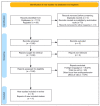Latest Knowledge on the Role of Vitamin D in Hypertension
- PMID: 36902110
- PMCID: PMC10003079
- DOI: 10.3390/ijms24054679
Latest Knowledge on the Role of Vitamin D in Hypertension
Abstract
Hypertension is the third leading cause of the global disease burden, and while populations live longer, adopt more sedentary lifestyles, and become less economically concerned, the prevalence of hypertension is expected to increase. Pathologically elevated blood pressure (BP) is the strongest risk factor for cardiovascular disease (CVD) and related disability, thus making it imperative to treat this disease. Effective standard pharmacological treatments, i.e., diuretics, angiotensin converting enzyme (ACE) inhibitors, angiotensin receptor blocker (ARBs), beta-adrenergic receptor blockers (BARBs), and calcium channel blockers (CCBs), are available. Vitamin D (vitD) is known best for its role in bone and mineral homeostasis. Studies with vitamin D receptor (VDR) knockout mice show an increased renin-angiotensin-aldosterone system (RAAS) activity and increased hypertension, suggesting a key role for vitD as a potential antihypertensive agent. Similar studies in humans displayed ambiguous and mixed results. No direct antihypertensive effect was shown, nor a significant impact on the human RAAS. Interestingly, human studies supplementing vitD with other antihypertensive agents reported more promising results. VitD is considered a safe supplement, proposing its great potential as antihypertensive supplement. The aim of this review is to examine the current knowledge about vitD and its role in the treatment of hypertension.
Keywords: antihypertensive treatment; clinical trials; hypertension; molecular mechanisms; supplement; vitamin D; vitamin D deficiency.
Conflict of interest statement
The authors declare no conflict of interest.
Figures




Similar articles
-
Antihypertensive drug classes have different effects on short-term blood pressure variability in essential hypertension.Hypertens Res. 2014 Jun;37(6):585-90. doi: 10.1038/hr.2014.33. Epub 2014 Mar 27. Hypertens Res. 2014. PMID: 24671016
-
Role of antihypertensive therapy with angiotensin-converting enzyme inhibitors or angiotensin II receptor blockers in combination with calcium channel blockers for stroke prevention.J Am Pharm Assoc (2003). 2010 Sep-Oct;50(5):e116-25. doi: 10.1331/JAPhA.2010.09234. J Am Pharm Assoc (2003). 2010. PMID: 20833609 Review.
-
Resistant Hypertension On Treatment (ResHypOT): sequential nephron blockade compared to dual blockade of the renin-angiotensin-aldosterone system plus bisoprolol in the treatment of resistant arterial hypertension - study protocol for a randomized controlled trial.Trials. 2018 Feb 12;19(1):101. doi: 10.1186/s13063-017-2343-3. Trials. 2018. PMID: 29433578 Free PMC article.
-
Plasma renin activity (PRA) levels and antihypertensive drug use in a large healthcare system.Am J Hypertens. 2012 Mar;25(3):379-88. doi: 10.1038/ajh.2011.216. Epub 2011 Dec 8. Am J Hypertens. 2012. PMID: 22158065
-
Antihypertensive drugs.Pharmacol Res. 2017 Oct;124:116-125. doi: 10.1016/j.phrs.2017.07.026. Epub 2017 Aug 2. Pharmacol Res. 2017. PMID: 28780421 Review.
Cited by
-
Association of serum 25-hydroxy vitamin D status with cardiometabolic risk factors and total and regional obesity in southern Iran: evidence from the PoCOsteo study.Sci Rep. 2024 Aug 3;14(1):17983. doi: 10.1038/s41598-024-68773-1. Sci Rep. 2024. PMID: 39097599 Free PMC article.
-
Impact of vitamin D supplementation on cognitive impairment in elderly individuals with hypertension.Front Neurol. 2025 Jun 24;16:1571078. doi: 10.3389/fneur.2025.1571078. eCollection 2025. Front Neurol. 2025. PMID: 40630911 Free PMC article.
-
Vitamin D: A Bridge between Kidney and Heart.Life (Basel). 2024 May 10;14(5):617. doi: 10.3390/life14050617. Life (Basel). 2024. PMID: 38792638 Free PMC article. Review.
-
Candidate SNP Markers Significantly Altering the Affinity of the TATA-Binding Protein for the Promoters of Human Genes Associated with Primary Open-Angle Glaucoma.Int J Mol Sci. 2024 Nov 28;25(23):12802. doi: 10.3390/ijms252312802. Int J Mol Sci. 2024. PMID: 39684516 Free PMC article.
-
The prevalence of vitamin D deficiency and its association to modifiable risk factors of cardiovascular disease among apparently healthy adults in Central Kerala.J Family Med Prim Care. 2025 Jun;14(6):2443-2451. doi: 10.4103/jfmpc.jfmpc_1899_24. Epub 2025 Jun 30. J Family Med Prim Care. 2025. PMID: 40726653 Free PMC article.
References
Publication types
MeSH terms
Substances
LinkOut - more resources
Full Text Sources
Medical
Miscellaneous

